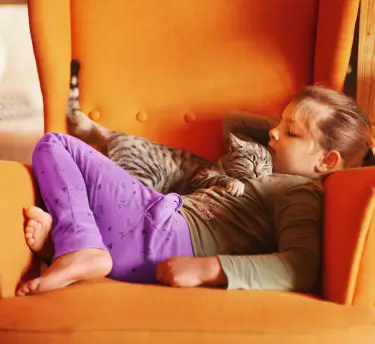Allergy season is different for everyone. That’s because different kinds of outdoor allergens — or irritants — get distributed into the air year-round.


Helping Children with Indoor Allergies
How to reduce the indoor allergens that affect kids.
For kids dealing with indoor allergies, home can mean an extravaganza of uncomfortable symptoms. That’s because allergic triggers can be tucked into just about every nook and cranny. No exaggeration: the kitchen, bathroom, closets, beds, pets, and even toys can all be sources of allergens.
Allergies are among the most common health issues affecting children in the U.S. In fact, 7.2% of children were diagnosed with hay fever in 2018.1
Children's Allegra® is here to help fight indoor allergies and let kids focus on being kids.
But there’s plenty more you can do around the house to reduce allergens and maximize their comfort. This starts by keeping your home free of — or at least minimizing — allergens.
The most typical symptoms of indoor allergies include:²
Allergies happen when a body detects an allergen. The body produces antibodies, which produce allergic symptoms. The most typical symptoms of indoor allergies include:2
First, see a doctor
If indoor allergies are making life uncomfortable for your child, start by making an appointment with their pediatrician or an allergist. A doctor will be able to run tests to see if your child has a sensitivity to one or more of the most common indoor allergens.
Eliminate allergy triggers and make things a little less sneezy
Once allergies are confirmed, here’s what to do: Clean house!
Allergens are practically everywhere. So the best way to get rid of symptoms is to get rid of the triggers. Here are the most common places to find them:3
What you can do about indoor allergens
Obviously, adding a bunch of new cleaning chores may not be practical. But you can use this list as a place to start:
Related Articles
*Among OTC oral antihistamines.